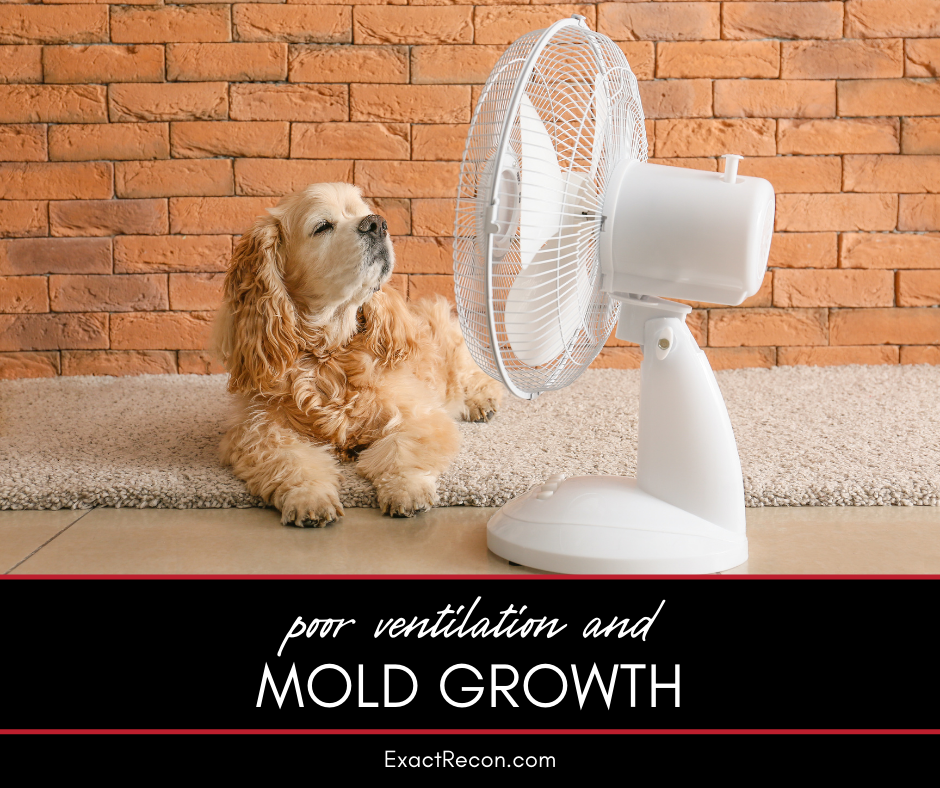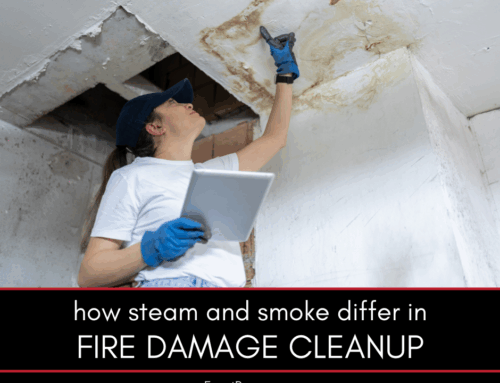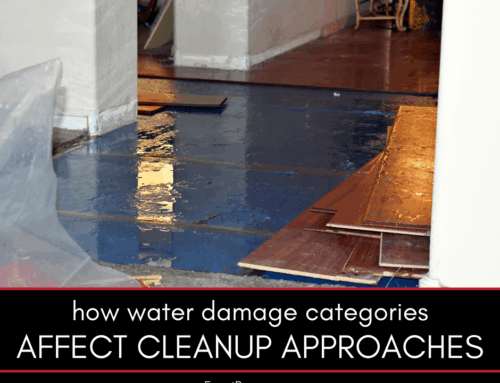Poor ventilation is one of the main causes of mold growth indoors. When rooms are inadequately ventilated, moisture becomes trapped, creating an ideal environment for mold to thrive. This can lead to health problems, unpleasant odors, and damage to walls and ceilings. Understanding the connection between ventilation and mold growth can help you create a healthier, mold-free home.
Poor Ventilation and Mold Growth
Mold is a common issue in homes with poor ventilation. When air circulation is limited, moisture from cooking, showering, and even breathing can accumulate, leading to higher humidity levels. This guide explains the following:
- How poor ventilation contributes to mold growth
- Identifying areas at risk for mold
- Improving ventilation in your home
- Using dehumidifiers and fans to reduce moisture
- When to call a mold remediation specialist
Here’s a closer look at each.
How Poor Ventilation Contributes to Mold Growth
Ventilation is essential for maintaining healthy indoor air quality. Without proper airflow, moisture can’t escape, causing humidity to rise in areas like bathrooms, kitchens, and basements. Mold spores, which are naturally present in the air, settle on damp surfaces and begin to grow. Mold can form on walls, ceilings, and floors, especially in dark or confined spaces with limited ventilation.
High humidity levels, often above 60 percent, allow mold spores to thrive. Poor ventilation can also lead to condensation on windows and walls, providing a direct source of moisture for mold growth. Controlling ventilation and reducing humidity are vital steps in preventing mold from taking hold in your home.
Identifying Areas at Risk for Mold
Certain areas in your home are more susceptible to mold due to limited ventilation and high humidity. Bathrooms are one of the most common places for mold to grow, as steam from hot showers creates moisture that can settle on walls, ceilings, and floors. Kitchens can also be at risk due to steam and cooking oils, which can coat surfaces and trap moisture.
Basements and attics, often confined and poorly ventilated, are another common area for mold growth. These spaces tend to have limited airflow, which allows moisture to build up. Checking these high-risk areas regularly can help you catch mold early before it becomes a widespread problem.
Improving Ventilation in Your Home
Improving ventilation is one of the most effective ways to prevent mold growth. Start by installing or upgrading exhaust fans in bathrooms and kitchens. Exhaust fans should vent outside, not into attics or other enclosed spaces, as this can worsen mold issues by redistributing moisture into confined areas. Using these fans during and after cooking or showering helps remove excess moisture from the air.
For basements, consider adding small windows or installing a ventilation system to improve airflow. If your home has an attic, ensure that it has adequate vents to allow for air circulation, which can prevent condensation buildup. In rooms without windows, try using portable fans or air purifiers to encourage airflow and reduce stale air.
Using Dehumidifiers and Fans to Reduce Moisture
Dehumidifiers are effective tools for controlling humidity, especially in areas prone to moisture. A dehumidifier works by pulling excess water from the air, helping keep humidity levels below 60 percent—the threshold where mold growth typically begins. Place dehumidifiers in high-risk areas like basements, bathrooms, or any room with poor ventilation to reduce moisture and inhibit mold growth.
Fans can also help by circulating air and preventing moisture from settling on surfaces. For example, using a ceiling fan in living rooms or bedrooms can help keep air moving, making it harder for mold to take hold. Be sure to position fans away from walls to allow for full air circulation. Proper fan placement can make a significant difference in air quality, reducing the likelihood of moisture accumulation and mold growth.
When to Call a Mold Remediation Specialist
If you notice persistent mold growth despite improving ventilation and controlling moisture, it may be time to call a mold remediation specialist. Professionals have the expertise to identify hidden mold and use specialized equipment to remove it safely. Mold can spread deep into walls, flooring, and even HVAC systems, so it’s crucial to address it fully to prevent recurrence.
A mold remediation specialist can also identify the underlying causes of moisture and offer solutions tailored to your home. In severe cases, they may suggest structural modifications, such as installing a more robust ventilation system or upgrading insulation. The Environmental Protection Agency provides guidelines on mold prevention and cleanup, which can help you determine when to seek professional help.
FAQ About Poor Ventilation and Mold Growth
Check out these commonly asked questions about poor ventilation and mold growth. If you don’t see your question here, please call our office and we’ll find you the answers you need.
How Can I Tell if My Home Has Poor Ventilation?
Signs of poor ventilation include condensation on windows, musty odors, and areas with consistent dampness or mold. Limited airflow often makes rooms feel stale and stuffy.
Can Mold Grow in Winter Due to Poor Ventilation?
Yes, mold can grow in winter, especially when windows are closed and ventilation is limited. Indoor activities like cooking and showering add moisture to the air, making ventilation even more essential during colder months.
Will Opening Windows Help With Mold Prevention?
Yes, opening windows can help reduce indoor humidity and improve air circulation. However, this is more effective in dry weather; opening windows during high humidity may bring more moisture indoors.
What Humidity Level Should I Aim for to Prevent Mold?
Aim to keep indoor humidity levels between 30 and 50 percent. Using a dehumidifier or air conditioner can help regulate moisture, especially in high-humidity climates.
Is There a Way to Prevent Mold in a Bathroom Without Windows?
Using an exhaust fan, wiping down wet surfaces, and running a dehumidifier can all help control moisture in windowless bathrooms. Regular cleaning also reduces the chance of mold growth in these confined areas.
Do You Need a Disaster Remediation Expert in Washtenaw County or Jackson County?
If your home has already been damaged, we can help. Check out our services and call Exact Recon for your free disaster remediation quote today. We offer:
- Water damage restoration
- Fire damage restoration
- Mold removal and remediation
- Fire and smoke restoration
- Sewer cleanup and disinfecting
- Reconstruction
- Wind and storm damage repair










